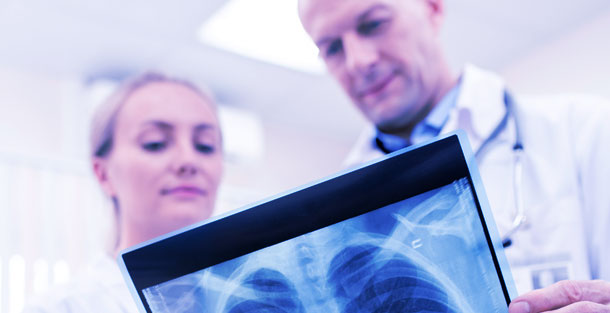
Reconsidering the “Gold-Standard” in Light of MIS Harvesting Techniques
The world of spine surgery has long been dependent on bone grafts for fusion procedures. Historically, autologous bone grafting has provided the primary means of encouraging bone growth in non-unions, bone defects, and arthrodesis procedures. Concerns with donor site morbidity and limitations of autologous graft repositories, prompted a search for alternative materials.
Use of various forms of allograft and BMP-2 has until relatively recently, been the primary alternatives to autologous bone grafting. Allograft in freeze dried, fresh frozen, and demineralized forms, lacks the osteogenic properties of autologous bone graft. While BMP-2 has proven to be an effective bone graft substitute, it presents a number of undesirable properties, such as a dose dependent florid inflammatory response, resulting in soft-tissue swelling and local bone resorption.
Implant subsidence and adjacent neuralgia are known risks with its use. Additional complications include heterotopic bone formation, a contraindication for skeletally immature patients, and pregnant / potentially pregnant / and potentially future pregnant women. Somewhat controversial is an increased risk for cancer as reported in the independent YODA (Yale Open Access Data Analysis) report.
A published Medtronic study of Medicare data (typically older patients than the general population) did not find an association with increased cancer risk. An obvious concern is the relatively high cost of BMP-2, particularly when the YODA study found no increased clinical benefit in spine fusion applications of BMP-2 relative to iliac crest autologous bone grafting.
Consequently, the search for alternatives has become an imperative in the field of spinal fusion. This blog post aims to provide a very brief description of the synthetic bone graft alternatives available today, ultimately concluding with a discussion of autologous cancellous bone.
Synthetic Bone Graft Alternatives and Manipulated Allograft
A wide range of synthetic bone graft alternatives have emerged in recent years. Some of these options include calcium phosphate ceramics, bioglass, bioactive glasses, calcium sulfate, polymer-based alternatives, composite materials, and growth factors or cell-based alternatives.
Autologous Cancellous Bone
Autologous cancellous bone (ACB) grafting has been established as the historical “Gold-Standard”, largely because of its effectiveness in diverse bone grafting applications as determined by numerous published studies reported in the literature for more than one century. Most alternative graft materials cite limited study data (often commercially sponsored or potentially conflicted authored) that pales in comparison to the body of literature associated with autologous bone graft. Historically autologous bone graft harvesting has been associated with relatively high rates of donor site complications, but this is largely a consequence of invasive techniques that stripped soft tissue attachments to the pelvis, removed large sections of cortical bone, and incited considerable adjacent surgical trauma in general. Less invasive open techniques (such as minimizing soft tissue stripping and cortical bone disruption) have demonstrated marked reductions in such complications.
Further still, percutaneous (MIS) approaches to autologous cancellous bone harvesting enabled by specifically designed instrumentation (e.g.; the COREX Autologous Bone Harvester) is reshaping the thinking of autologous cancellous bone grafting for surgeons considering or experienced with its use. Postoperative donor site morbidity is no longer of the same concern, represented by outdated open techniques for bone graft harvesting. Harvested directly from the patient, ACB offers the triple advantage of being osteoconductive, osteoinductive, and osteogenic properties.This means it not only provides a scaffold for new bone growth and stimulates the process of bone regeneration, but also carries vital cells for the formation of new bone, thereby making it a uniquely valuable resource for bone grafting. Additional benefits incur with minimizing graft manipulation, such as morselization or displacing cellular elements from their native locations within the trabecular matrix.
ACB’s appeal lies in its readiness for use, quality, and the diminished risk of disease transmission or immune response, issues often associated with allografts or xenografts. Applied in an array of procedures, from spinal fusion to complex fracture repair, ACB has exhibited promising results thanks to its content of mesenchymal stem cells, growth factors, and proteins which foster an ideal environment for bone regeneration. Some alternative products claim theoretical equivalence by using allograft scaffolding and adding expanded mesenchymal cell elements. This has not been clearly shown to provide any benefit over acellular allograft of similar composition. It is known that mesenchymal cells are significantly affected by various forms of manipulation, including their location within bone matrix and relative ration to other cellular elements. So simply adding mesenchymal cells to allograft does not equate with autograft.
Moving forward, the continued use of ACB should be considered as the most time tested and reliable means of achieving bone growth. Further research on the relative benefits of MIS or percutaneously harvested ACB relative to alternatives, will further redefine its utilization. Preconceptions on donor site morbidity, fueled by citation of outdated open techniques of bone graft harvesting, should be supplanted by an understanding of low morbidity contemporary techniques. Minimally invasive harvested ACB should represent “first line” consideration for bone graft applications, solidifying its place in orthopedic bone grafting surgery, as the Gold-Standard of care for bone graft procedures.
The COREX minimally invasive bone harvester is an innovative device that addresses harvest site morbidity associated with autologous cancellous bone grafting. COREX has been specifically designed to provide a safe, percutaneous, surgeon controlled method of harvesting cancellous bone, with minimal graft manipulation, thus maximizing the benefits of autologous bone graft while minimizing harvest morbidity.
Join us as we journey into the future of spine surgery and bone grafting today! Contact us to learn more, or request your free sample.

